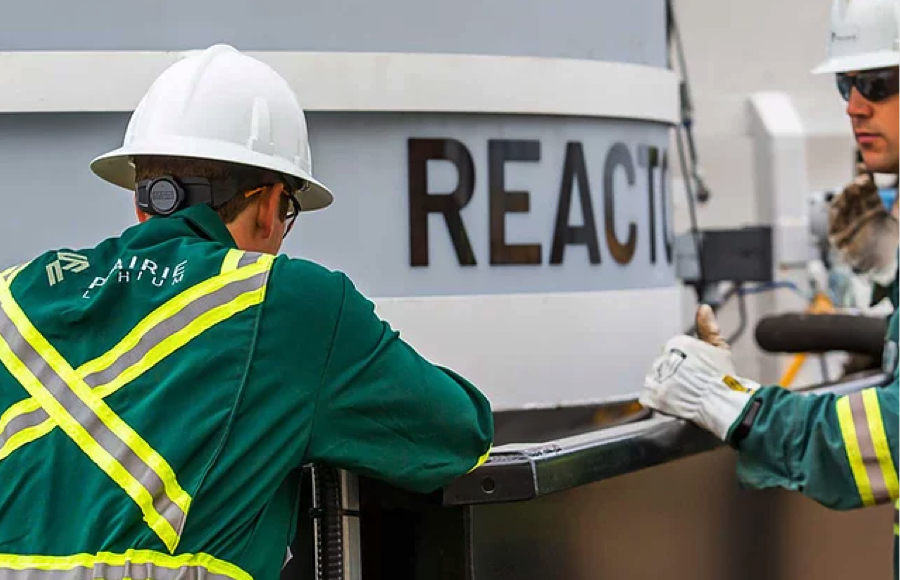Canada’s Saskatchewan adds lithium to mining portfolio

The salty underground water is then mixed with an ion exchange material in a tank, and is eventually converted into lithium chloride.
Provincial Energy and Resources Minister Bronwyn Eyre said lithium is “having a moment” right now, and the demand is expected to increase by five-fold by 2030.
The pilot project processing facility, in Emerald Park, successfully extracted 99.7% of lithium from the brine in “a matter of minutes”, she said in the statement.
Eyre said this process is cleaner than the traditional way of extracting the mineral from hard rock and creates a sustainable use for the oil wells.
“Which is the beautiful irony, that oil field brine will power electric vehicles of the future. What’s not green about that?,” the minister said.
Saskatchewan’s Growth Plan supports the development of lithium exploration and extraction technologies, providing funding programs like the Saskatchewan Petroleum Innovation Initiative and Saskatchewan Advantage Innovation Fund — both used by Prairie Lithium.
Top battery player
The province currently produces uranium, potash and helium, but a total of 22 of the 31 minerals Canada has classified as “critical” have been discovered in Saskatchewan.
Experts have flagged the country’s potential to becoming a top player in the global EV battery market thanks to its lithium, graphite, nickel, cobalt, aluminum and manganese deposits.
Having most of key ingredients for advanced battery manufacturing and storage technology, however, is not enough. Without an ecosystem that allows for the creation of a market and industry for batteries, Canada could miss the chance to position itself as a top competitor in the global electric vehicles battery supply chain.
Value-adding, Benchmark Mineral Intelligence director Simon Moores has said, could see Canada gaining a big piece of the growing lithium-ion and EVs market.
Ottawa has taken steps to support the fledgling battery materials sector. The province of Quebec acquired last year 50% of troubled Nemaska Lithium (TSX: NMX) in a new joint venture with Livent Corp. and the Pallinghurst Group.
Australia’s Piedmont Lithium (ASX: PLL) and its 19%-owned Sayona Mining (ASX: SYA) completed in August the acquisition of Canada’s North American Lithium (NAL). The move was part of their plan to create a potential lithium production hub in the Abitibi region of Quebec.
Cobalt and nickel too
In Ontario, the federal and provincial governments offered a combined C$10 million ($8m) to help First Cobalt (TSX-V: FCC) develop a refinery, which would be the sole producer of refined cobalt in North America.
Cobalt is already, though not exclusively, processed in Canada. Sherritt International brings nickel and cobalt mixed sulphide intermediate from Cuba to Fort Saskatchewan, Alberta.
The plant has the capacity to produce up to 35,000 tonnes of nickel and 3,800 tonnes of cobalt (100% basis) per year.
Brazil’s Vale (NYSE: VALE) also produces refined cobalt as a by-product at nickel mines in Sudbury, Ontario.
The world’s largest miner BHP (ASX, LON, NYSE: BHP) is only days away of officialising its acquisition Noront Resources (TSX-V: NOT), which will give it access to the Eagle’s Nest nickel and copper deposit in the “Ring of Fire” in northern Ontario.




